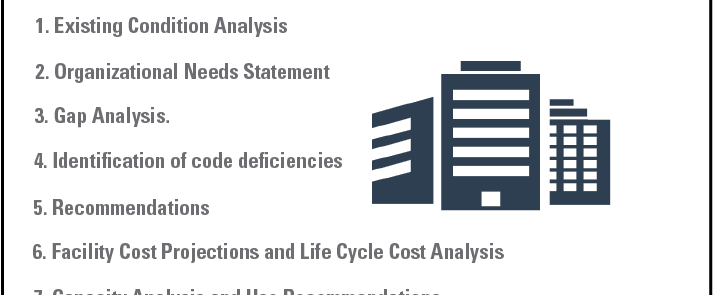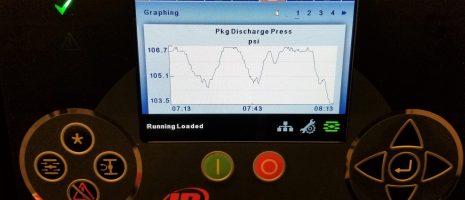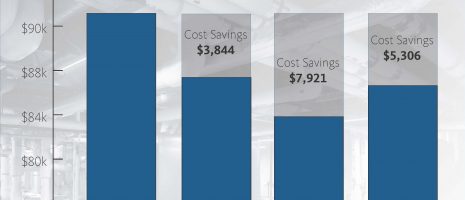Assessing a facility assessment

By Mike Zorich

Is your campus or building due for a facility assessment? If so, it’s important to understand the phases and components that can help ensure that the assessment you commission is comprehensive and accurate.
A facility assessment is the main component of a strategic facility plan and is related to, but different from, a master plan, which is a site-specific physical plan for a building or campus. Whether part of a master planning process or an independent system evaluation, however, a comprehensive facility assessment includes the following key components:
- Existing condition analysis
- Organizational needs statement
- Gap analysis
- Identification of code deficiencies
- Recommendations
- Facility cost projections / life cycle cost analysis
- Capacity analysis and use recommendations
These tasks are conducted at various stages in the assessment, which consists of three phases: Initiation, Physical Evaluation, and Program and Options.
Initiation: During this phase, project initiation meetings define and finalize project scope, roles, and responsibilities of the project team, and establish a clear understanding of the objectives, expected outcomes, schedules, processes, budget, and other elements. This includes touring existing facilities and reviewing existing plans, documentation, reports, and other materials to help develop an understanding of a facility’s system assets and deficiencies. If part of master planning, recent infrastructure updates should be reviewed and prioritized projects should be identified.
Physical Evaluation: An extensive analysis is then conducted of the system or systems that are to be assessed – HVAC, plumbing, fire protection, electrical, technology, structural, or any combination thereof. Special attention must be paid to code compliance issues, operational efficiency, and strategic importance. Upon completion of the analysis, the engineer should review findings with the team. Depending on the complexity of the campus, stacking diagrams for new buildings and/or “bubble diagrams” representing potential repurposing of existing buildings can be provided.
Program and Options: At this stage, existing system conditions and capacities are compared to projected needs and space analysis. During this phase, meetings with key users should be held to determine mechanical, electrical and technology needs and relationships, growth patterns, services, and spatial requirements. (Use of benchmark data is common and includes such things as typical room sizes, space standards, square feet per person or department sizes with grossing factors applied.) This information, in addition to the current system analysis, results in an organizational needs statement and a gap analysis of current system capabilities and future needs.
At this point several conceptual alternatives should be developed, based upon all information gathered – organizational needs, owner goals, current and future infrastructure capacity, and budget. The ensuing evaluation process should provide phasing plans, cost estimates, functional comparisons, facility cost projections, and life cycle cost analysis for each alternative. Based on this information the client and project team should identify the most appropriate system or bundle of systems. The approved design is then refined, and cost estimates and an implementation schedule are provided. Phasing plans also are finalized, with special attention given to utility extension, relocation, and limitations, as well as identification of any service outages that will be required during reconfiguration of the infrastructure.
Every facility’s assessment will be unique. All assessments, however, should provide for the same key tasks and analyses to be conducted within an organized process of discovery that carefully considers stakeholder needs and input. This will lead to a clear understanding of the future infrastructure requirements of your building or campus – and your best options for getting there.












